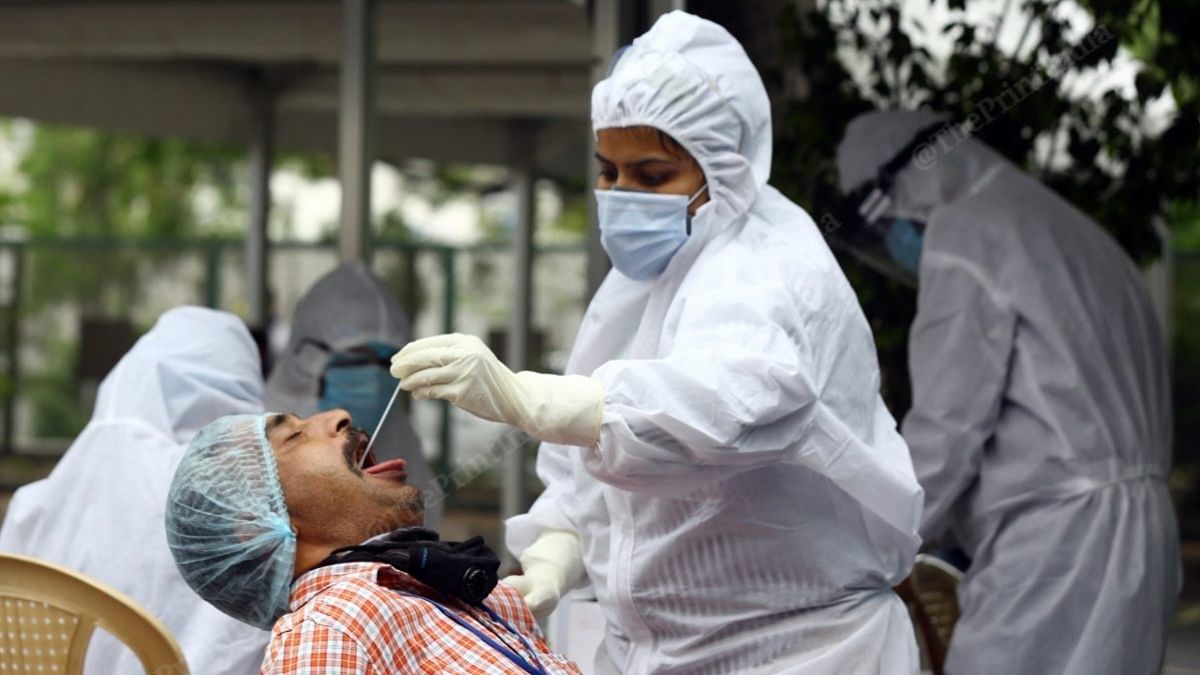New Delhi: The COVID-19 pandemic has upset the trend of steady rise in life expectancy at birth and healthy life expectancy at birth (HALE) globally, the World Health Organisation’s (WHO) latest report card on health has revealed.
According to the World Health Statistics 2024 report released Friday, between 2019 and 2021, global life expectancy dropped by 1.8 years to 71.4 years. Global healthy life expectancy also saw a drop of 1.5 years to 61.9 years in 2021. Both statistics are back to their 2012 levels.
The pandemic wiped out nearly a decade of progress in improving life expectancy within just two years, the report said.
Life expectancy at birth is defined as the average number of years that a newborn could expect to live, while healthy life expectancy is defined as the average number of years that a person can expect to live in “full health” from the time of birth.
In a statement, WHO Director-General Dr Tedros Adhanom Ghebreyesus said, “There continues to be major progress in global health, with billions of people who are enjoying better health, better access to services, and better protection from health emergencies. But we must remember how fragile progress can be.”
He added, “In just two years, the COVID-19 pandemic erased a decade of gains in life expectancy. That’s why the new Pandemic Agreement is so important: not only to strengthen global health security, but to protect long-term investments in health and promote equity within and between countries.”
The report went on to describe how the impact of the pandemic in terms of life expectancy was unevenly spread across different regions of the world.
The WHO regions — Americas and South-East Asia — saw the worst drop, with life expectancy declining by approximately 3 years and healthy life expectancy by 2.5 years between 2019 and 2021.
The Western Pacific region, on the other hand, was relatively least affected during those two years, with losses of less than 0.1 years in life expectancy and 0.2 years in healthy life expectancy.
Also Read: Drug regulator CDSCO asks all medical device makers to ‘self-report adverse events’ to mitigate risks
India’s statistics
The statistics for India — available only till 2019, or for the period before the Covid pandemic — showed that between 2000 and 2019, life expectancy at birth improved by 8.68 years, from 62.1 years in 2000 to 70.8 years in 2019.
During this period, healthy life expectancy at birth improved by 7.39 years. It went from 52.9 years in 2000 to 60.3 years in 2019.
The top causes of deaths in the country included ischemic heart disease, chronic obstructive pulmonary disease, stroke, tuberculosis, diarrheal diseases, neonatal conditions, liver cirrhosis, lower respiratory infections, road injuries and diabetes.
Among Indian women, however, the top killers included all these diseases, except liver cirrhosis and road injuries, and additionally included asthma and falls.
Other key highlights
According to the report, COVID-19 ranked as the third highest cause of mortality across the world in 2020, and the second highest in 2021. Nearly 13 million lives were lost during this period.
The disease was the leading cause of death in the Americas for both years. Barring the African and Western Pacific regions, COVID-19 was among the top five causes of deaths globally.
Before the pandemic, noncommunicable diseases (NCDs), such as ischaemic heart disease and stroke, cancers, chronic obstructive pulmonary disease, Alzheimer’s disease and other dementias, and diabetes accounted for 74% of all deaths in 2019, the report said. Even during the pandemic, NCDs led to 78 percent of non-COVID deaths.
However, the report highlighted that despite the setbacks caused by Covid, there has been some progress towards achieving Triple Billion targets and health-related indicators of Sustainable Development Goals (SDGs).
Since 2018, an additional 1.5 billion people have achieved better health and well-being. However, rising obesity, high tobacco use and persistent air pollution have hindered progress to some extent.
(Edited by Mannat Chugh)
Also Read: Superbugs behind fatal blood infections in India rapidly growing resistant to last-resort antibiotics

